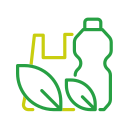Why Eco-Conscious Laundry Products Matter
Conventional detergents can contain phosphates, optical brighteners, and persistent fragrances that add up in waterways. Eco-conscious products prioritize biodegradable surfactants, safer builders, and minimal additives. Together, these choices support aquatic life, protect soil health, and keep your home’s air fresher with fewer lingering chemicals.
Why Eco-Conscious Laundry Products Matter
Washing synthetic fabrics releases tiny microfibers that can travel to rivers and oceans. While product choice matters, eco-laundry also means prevention: filters, wash bags, and cooler cycles reduce fiber shedding. Choosing products designed for cold-water performance helps you clean effectively while minimizing unseen environmental impacts.
Why Eco-Conscious Laundry Products Matter
Have you switched to eco-conscious detergents or refills? Tell us what changed—your skin comfort, your waste bin, your energy bill. Your experience can guide someone starting out today. Leave a comment, or subscribe to get featured in our monthly roundup of real-world eco-laundry wins and lessons learned.
Why Eco-Conscious Laundry Products Matter
Lorem ipsum dolor sit amet, consectetur adipiscing elit. Ut elit tellus, luctus nec ullamcorper mattis, pulvinar dapibus leo.




